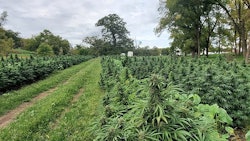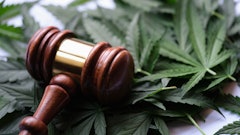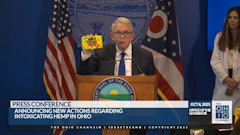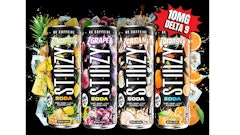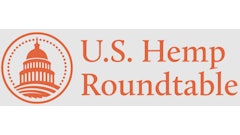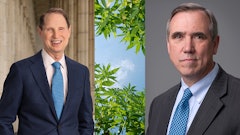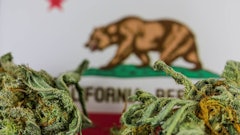According to a November Hemp Benchmarks report, the hemp market’s volatility appears to be coming to an end with stabilization of hemp prices at the end of 2020.
Adam Koh, Hemp Benchmarks’ editorial director, tells Hemp Grower that after 12-18 months of hemp biomass prices declining, they began to stabilize this past October and even increase slightly in November. This likely foretells a more predictable market in 2021, Koh says.
More Market Stability for CBD
Such market stability is essential for farmers because they can better predict revenue and, as a result, hone their production methods, purchase equipment to keep costs lower, and increase efficiency, Koh says.
For example, referencing the firm’s November Wholesale Hemp Price Benchmarks report findings, Koh says there is a move towards greater automation in harvesting and post-harvesting as growers better understand what they can spend. The result was a more efficient, cost-effective approach than previously when harvesting, drying, and storing was done by hand.
There is also more stability now, and likely in 2021, as growers and others in the hemp market better understand the costs and challenges of cultivating the crop. “People are more clear-eyed that it is not going to be an easy road, and it’s going to take time to figure out the regulatory landscape and supply chains,” Koh says.
While challenges remain, more realistic expectations should lead to less financial difficulties as growers, processors, and other parts of the supply chain know the challenges and better prepare for them. This approach is vastly different from the earlier days of CBD, where Koh says there was “irrational exuberance” about the market possibilities that led to supply far outpacing demand.
Challenges Remain
Despite the increased market stability, two issues continue to play a role in the CBD market’s future – pending Food and Drug Administration (FDA) regulations and the coronavirus pandemic, Koh says.
Uncertainty about CBD’s legality as an ingestible product has a considerable impact on the downstream aspects of the supply chain, Koh says, including processors, extraction, and retail operations. The FDA still considers CBD illegal in most forms. The problem is that the FDA may not even come out with a final rule in 2021. Koh adds that it can take three to five years, in some cases, for the FDA to make a final decision.
The pandemic is another industry hurdle. In 2020, Koh says the pandemic shrunk the CBD market as many retailers closed amid the lockdown and consumers faced economic difficulties. “Those were CBD sales channels that were basically lost this year,” Koh says. Plus, these businesses were not deemed essential and did not receive any financial support from the federal government, being essentially “left to fend for themselves,” he says.
An end to the pandemic may allow these smaller retailers to reopen, benefitting the CBD market, but to “drive significant sales growth,” Koh says bigger retail chains, such as CVS and grocery stores, will need to start selling these products. To get there, it will likely take both an end to the pandemic and a favorable ruling from the FDA, Koh says. There is interest from larger chains, but they want to see even more certainty in the market before joining in, he adds.
Grain Market in 2021
Koh says Hemp Benchmarks anticipates that the hemp grain market will be relatively small yet stable and focused on states like Montana, North Dakota, and Minnesota in 2021. For example, Koh notes that of the 12,000 to 13,000 acres of hemp in Montana, between 10,000 to 11,000 are grown for grain. In total, there are approximately 30,000 acres of hemp being grown for grain nationwide.
The fact that the FDA has set standards for food products and the trends towards plant-based proteins are good signs for hemp grain’s future, Koh says. For the market to take off, as is the case with CBD, larger buyers need to get involved, such as consumer packaged goods companies like Nabisco and Kraft. It will take more research and development on hemp grain for these kinds of companies to engage, he adds.
Hemp Fiber Remains Speculative
The hemp fiber market remains more uncertain, Koh says. Most importantly, there is not a reliable option to process hemp fiber. There is also an undeveloped market for hemp fiber products.
That uncertainty will likely lead growers to shy away from growing hemp crops for fiber in 2021, Koh says.
However, companies are beginning to make investments in large-scale fiber processing facilities across the U.S. Two companies hoping to have a significant footprint in the space are Panda Biotech in Dallas and IND Hemp in Fort Benton, Montana. Panda, for its part, anticipates that it will partially start operations in the first quarter of 2021 and be fully up and running at the start of 2022. IND Hemp is expecting its processing facility to be ready by the third quarter of 2021.
Koh adds that there is not a mature market for hemp fiber products yet. “There just hasn’t been that full-scale adoption” of hemp fiber, Koh says. However, some companies like Levi’s and Nike have started to become more engaged, making jeans and other products using hemp beginning in 2019.











